Special Symposium
International Society of Audiology (ISA) Presentation
Monday 5 May 2014
1.30pm - 2.00pm
World Health Organisation (WHO) Audiology.
Programme for prevention of deafness and hearing loss: promoting primary ear and hearing care
Introduction
Lady Jean Wilson
The WHO programme for prevention of deafness and hearing loss was restarted in 2011 and is focussed on promoting ear and hearing care within primary health care in WHO Member States. One of WHO's role is to effectively advocate for development of suitable programmes to address the needs of hearing loss at the global, regional and national levels, through development and use of suitable advocacy tools. The programme endeavours to provide full technical support to countries in the development, implementation and monitoring of strategies for prevention of hearing loss. For this purpose, WHO works to develop evidence-based tools, guidelines and training materials. The priorities, principles, challenges faced and possible opportunities in the programme are discussed. Partnerships at international and national level play an important role in advancing WHO's agenda in this field. The key role played by professionals and organizations in developing the
programme for prevention of hearing loss across the world is outlined in this presentation.
Speaker
Dr Shelly Chadha
Technical Officer, Prevention of Deafness and Hearing Loss, WHO HQ
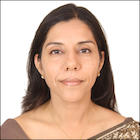
A medical doctor and otolaryngologist by training, Shelly Chadha has been keenly interested and involved in the development of various aspects of public health as applied to the field of prevention of deafness, hearing loss and ear diseases. Shelly has worked extensively in this field over the last twelve years. Shelly has been a key resource person in the development of National Programme for Prevention and Control of Deafness in India and has contributed to the development of this field in the South-East Asia region, through the concept of 'Sound Hearing 2030.' Shelly has served as Professor of Otolaryngology-Head and Neck Surgery at the Maulana Azad Medical College in New Delhi from 2001 to 2011. Presently, she is working as the Technical Officer for prevention of deafness and hearing loss at headquarters of the world Health Organization in Geneva, Switzerland.
Office of Hearing Services (OHS) Presentation
Monday 5 May 2014
1.30pm - 2.00pm
Research to inform policy and programs for hearing loss prevention and treatment in Australia
Speaker
Ms Tracey Duffy
The Australian Government's Hearing Services Program supports pensioners, veterans, children and young people, Aboriginal and Torres Strait Islander clients and those with complex hearing problems to access
hearing assessments and rehabilitation aids, via a network of private and public service providers. In 2012-13 over 630,000 Australians were supported in this way.
This presentation will provide a statistical overview of operations and issues involved in delivering the Hearing Services Program. It will provide an overview of the cohort of recently completed research projects from the Hearing Loss Prevention Program, and draw on this, and the views of session participants, to identify areas
where research can illuminate future policy and program challenges for hearing services in Australia.
Ms Tracey Duffy
National Manager, Office of Hearing Services
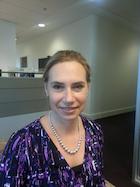
Tracey Duffy joined the Office of Hearing Services as National Manager in August 2012. Prior to this role, Tracey has held a number of executive level positions within the Department of Health and Ageing in the areas of pharmaceutical policy, food policy and aged and community care policy and reform. She has also worked in the private aged care sector and as a consultant for a national health and human services consulting firm.

Monday 5 May 2014
5.00pm - 6.00pm
The International Evoked Response Audiometry Study Group (IERASG) Special Session: Past & future directions in auditory evoked responses
5.00pm - 6.00pm
| 5:00pm - 5:05pm | Introduction, historical overview & purpose of IERASG Professor Suzanne Purdy |
|
| 5:05pm - 5:13pm | Neural imaging of the critical bandwidth in human auditory cortex Professor David McPherson |
|
| 5:13pm - 5:21pm | Auditory electro-physiology in clinical practice: New potential applications of old electrophysiological measures Professor Jose Juan Barajas Dr Prat |
|
| 5:21pm - 5:29pm | The role of evoked potentials diagnosis and assessing treatment outcomes in auditory processing disorders Dr Mridula Sharma |
|
| 5:29pm - 5:37pm | Electrically evoked auditory responses Professor George A. Tavartkiladze |
|
| 5:37pm - 5:45pm | AERs in children with Auditory Synaptopathy/Neuropathy (AS/AN) Professor Martin Walger |
|
| 5:45pm - 6:00pm | Future directions in AERs & Introduction to 2015 Busan IERASG Biennial Congress Professor Suzanne Purdy |
|
Disclaimer: The Congress program information is correct at the time of printing. However, the organisers reserve the right to change the information where necessary without notice.
ABSTRACTS
1. SC Purdy & JD Durrant
'Introduction, historical overview and purpose of the International Evoked Response Audiometry Study Group (IERASG)'
The International Evoked Response Audiometry Study Group (IERASG) (www.ierasg.ifps.org.pl/index.php?s=home) is an organisation that provides a forum for the discussion of auditory evoked responses. IEARSG began as the "ERA Club" in 1968 under the leadership of Professor Hallowell Davis. In this special session at the World Congress of Audiology 2014 members of the IERASG Council will discuss past, current and future issues in auditory electrophysiology, including electrical evoked responses and cochlear implants, the contribution of auditory evoked responses (AERs) to clinical diagnosis and management of auditory neuropathy spectrum disorder, auditory processing disorder and other complex hearing disorders, and the use of AERs in infants with hearing loss.
2. David L McPherson, S Bernhisel, and R Harris
Neural imaging of the critical bandwidth in human auditory cortex'
Objective: Critical bandwidths (CBW) in the peripheral auditory system of humans represent the frequency resolution of hearing. The CBW has been defined as that bandwidth surrounding a center frequency (CF) whose loudness perception remains constant. Psychophysical measurements of the CBW have been well studies in both humans and animals. Studies completed in humans using EVPs have primarily focused on changes in the auditory wave V, Na, and to a lesser extent on the N1-P2 complex. The purpose of the current study was to further explore the cortical response to the CBW using source reconstruction and aligning the EEG with MRI images of the human cortex.
Study Sample: Four males and one female between the ages of 22 and 26 years of age participated in the study. All participants had no known history of hearing loss, neuropsychiatric disorders, or other CNS disorders. Each participant had to have CBWs at 250, 500, 1000, and 3000 Hz within ranges in accordance to Zwicker and Fastl (1990).
Method: The EEG was streamed to a computer for post hoc analysis. Two-tone complexes (Soeta (( Nakawawa, 2006) were presented monaurally for CFs of 250, 500, 1000, and 3000 Hz at 65 dB HL. The width of the bandwidth was varied between 2 and 2000 Hz in 11 increments, depending on the CF. The participants were instructed to complete a button push based on the perceived loudness comparison of two tones (2IFC). Reaction times and response characteristics (hits, misses, false alarms, and correction rejections) were obtained. Signal averaging and source localization analysis was obtained post hoc.
Results: Latency values for Pa, P1, N1, and P2 were in agreement with age matched norms (McPherson (Ballachanda, 2000). Significant differences were seen between the left and right hemispheres for the tonal stimulation. This is consistent with known observations that tonal information in the human auditory cortex is processed primarily by the right hemisphere. Behavioural measures of reaction time and response characteristics did not yield any direct correspondence between those measures and the P1/N1 response.
Conclusions: Cortical representation of the CBW in human auditory cortex appears to have a slight hemispheric dominance over the right hemisphere. No specific dipole source was reconstructed. The results of this study are consistent with the findings reported by Soetas and Nagawa (2006).
Significance: Given the results of this study a right hemispheric effect was been observed)) however, there is apparently no equivalent dipole source in direct correspondence with the CBW. To a large extent, this is not entirely surprising given that the CBW is determined by the tuning characteristics of the cochlea.
3. Jose J Barajas de Prat
'Auditory electro-physiology in clinical practice: New potential applications of old electrophysiological measures'
Loudness is the characteristic of a sound that is primarily a psychological correlate of physical strength or amplitude. In order to eliminate the need for subjective responses, objective methods for estimating loudness growth using electrophysiological measures have been proposed. Auditory steady-state responses (ASSR) appear specially promising for estimating loudness growth since: a) frequency specific b) fast since the two ears can be stimulated at the same time and c) they are statistically obtained. Some evidence that the sensation of loudness can be measured by means of ASSR has been pointed out. A loudness map can be reconstructed from a physiological loudness growth function obtained from the amplitude of the ASSR. This procedure can be used for diagnostic and rehabilitative purposes. In this presentation, we review the results of work carried out in our laboratories in recent years that relates to physiological loudness by ASSR.
4. Mridula Sharma (Macquarie University, Sydney, Australia)
'The role of evoked potentials diagnosis and assessing treatment outcomes in auditory processing disorders'
Cortical auditory evoked potentials (CAEPs) allow objective measurement of sound processing at the cortical level. CAEPs are often used as an objective measure of auditory detection and clinically being used for hearing instrument evaluation in babies with hearing loss. This presentation will review recent CAEP studies investigating the role of CAEPs in evaluation of auditory processing and auditory plasticity.
5. George Tavartkiladze (National Research Centre for Audiology and Hearing Rehabilitation, Moscow, Russia)
'Recent Trends in Electrically Evoked Auditory Responses: Cochlear Implantation'
Recent developments in cochlear implant systems and software design as well as international experience in the objective methods application permit us to reconsider the place and the validity of some of these measures. The results of the electrically evoked stapedial muscle reflex (EESR), NRT and electrically evoked brainstem response (EABR) recordings obtained at the different stages of cochlear implantation will be analysed with the subsequent psychoacoustic comparisons. The widening of the selection criteria, implantation in patients with partial deafness and the use of bimodal and bilateral stimulation stipulated additional research, new electrode and speech coding strategies development. Special attention in this study was drawn to the applicability of EESR, NRT and EABR, development of the useful recommendations at surgical and post-surgery stages of implantation. Additional information could be obtained with the investigation and analysis of the spread of excitation, excitation summation, recovery function and neural fatigue. At the same time the recording of late responses in CI patients becomes more and more significant for the CI efficiency evaluation.
6. Martin Walger
'AERs in children with Auditory Synaptopathy/Neuropathy (AS/AN)'
Auditory Synaptopathy / Neuropathy (AS/AN) is a special subtype of sensorineural hearing disorders with heterogenous phenotypes and underestimated incidence. In most cases AS/AN develops in early childhood which poses a great challenge to clinical diagnosis, therapy and rehabilitation. Within audiological assessments children with AS/AN present otoacoustic emissions (TEOAE)) DPOAE) and cochlear microphonics (CM), absence of stapedius reflexes (SR) as well as missing or pathologically altered auditory evoked brainstem potentials (ABR). Within OAE-based newborn hearing screening programs children with AS/AN cannot be identified. The most sensitive instrument for the differential diagnosis of AS/AN is the registration of click-evoked ABRs with different click polarities and transtympanic electrocochleography (ECoG) under general anaesthesia to analyse pre- and postsynaptic changes of hair cells and cochlear nerve. The registration of AERs of short, middle and long latencies can be used for evaluating the maturational plasticity of the central auditory system and the effectiveness of amplification or cochlear implantation up to the cortical level.
7.SC Purdy & B Cone
'Future directions in AERs'
For more than four decades the International Evoked Response Audiometry Study Group biennial meetings have provided an opportunity for clinicians and scientists to discuss innovations in clinical applications and to develop new understanding of auditory evoked responses. AERs from the cochlea through to the cortex play a key role in diagnostic and rehabilitative audiology including screening, hearing threshold estimation, differential diagnosis and cochlear implant evaluation and mapping. This presentation will highlight developments in the field that will expand the use of AER to probe different aspects of auditory processing including speech feature discrimination in pre-verbal infants, central auditory system organisation, auditory plasticity and the efficacy of auditory re/habilitation approaches.
Professor Suzanne Purdy, PhD, MSc, DipAud, MNZAS, FAAA, MAudSA, MNZSTA
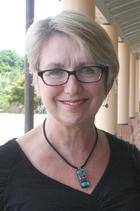
Suzanne Purdy (PhD, MSc, DipAud, MNZAS, FAAA, MAudSA, MNZSTA) is Professor and Head of Speech Science at the University of Auckland and Vice-Chair of the International Evoked Response Audiometry Study Group (IERASG). Her academic background is in psychology, speech science and audiology and she has a longstanding interest in communication disorders. She has worked clinically as an audiologist and has been an academic and researcher since completing her PhD at the University of Iowa in 1990. She is an active researcher with more than 100 peer-reviewed journal articles and book chapters, most of which relate to clinical aspects of hearing and communication disorders. Suzanne has broad ranging research interests but is particularly interested in hearing loss in children. Current research areas include auditory processing disorder, auditory electrophysiology, hearing loss in children and adults, perception and production of speech prosody, voice disorders in teachers, and choral singing therapy for people with neurological disease.
Associate Professor David McPherson, Ph.D
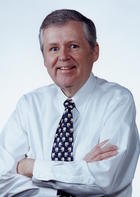
David McPherson was born in 1945 in California, USA and completed his Ph.D. in 1972 at the University of Washington. Subsequently, he completed a Post-Doctoral fellowship with Vicente Honrubia in the section of Otolaryngology, Faculty of Medicine, at the University of California, Los Angeles (UCLA). He was Associate Professor-in-Residence in the Department of Neurology at the University of California, Irvine and served as Department Chair of Communication Disorders at Brigham Young University. Currently, he is Professor of Neuroscience and Communication Disorders at Brigham Young University. His areas of research focuses on brain, language, hearing, and imaging. He serves I.E.R.A.S.G. as the Membership Secretary.
Dr Jose Juan Baraajas De Prat, Md Phd
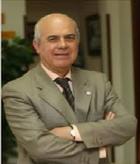
Director of Clínica Barajas en Santa Cruz de Tenerife
President of the Canarian Foundation Dr Barajas for Prevention of Deafness
Academic elected of the Royal Medical Academy of the Canary Islands.
Main Research of Interest:
Auditory Electrophysiology of the Auditory System & Central Auditory Processing
Dr Mridula Sharma
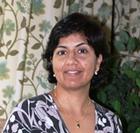
Dr Sharma is Senior Lecturer and program convener at Macquarie University. She has over 20 years of clinical experience (India, New Zealand and Australia) as a Speech Pathologist and Audiologist. Dr Sharma's main research interests are investigating speech perception in noise, physiological mechanisms at cortical level using EEG and auditory training to improve speech perception in noise. Her postdoctoral work at University of Auckland (2004-2007) aimed to investigate language, memory and attention difficulties in children with listening in noise problems. Dr Sharma started a clinic at Macquarie University Hearing Clinic in 2008 testing populations with listening in noise difficulties (both adults and children). Since 2012, Dr Sharma is a committee member of NSW branch of Audiology Society of Australia and a Council member.
Professor George Tavartkiladze
Director and founder of the National Research Centre for Audiology and Hearing Rehabilitation, Head of the Chair on Clinical Audiology, Russian Medical Academy for Postgraduate Training, Moscow, Russia.
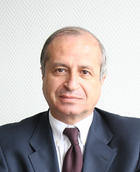
Main Research Interests:
Experimental and clinical audiology including hearing electrophysiology (acoustically and electrically evoked auditory potentials), frequency selectivity of the auditory periphery, otoacoustic emissions (properties, generation mechanisms, suppression, clinical application), early detection, diagnosis and rehabilitation of hearing disorders, cochlear implantation, hearing aid fitting (more than 350 publications).
Professor Martin Walger
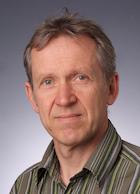
Martin Walger was born 1955 in Gütersloh, Germany. He is Professor of Audiology and Head of the Department of Audiology and Paediatric Audiology at the ENT University Clinic as well as audiological head of the Cochlear Implant Center of Cologne (CIK) and the Screening Center of the Northrhine region in Germany. He studied biology from 1976 to 1983 at the faculty of mathematics and natural sciences at the University of Bonn, where he finished his Ph.D. in 1988. He completed the postdoctoral lecture qualification in 1999 at the medical faculty of the Cologne University and works as associate professor since 2004 in the field of audiology. Since 1999 he has been a Council member of the IERASG.
Special Symposium - Hearing CRC
Monday 5 May 2014
5.00pm - 5.35pm
Guidelines for Cochlear Implants candidature in adults
Speaker
Professor Richard Dowell
This presentation summarizes five studies undertaken within the Hearing CRC addressing issues of candidacy and outcome prediction in adults using cochlear implants.
1. Investigation of the influence of auditory deprivation on cochlear implant outcomes suggests that bilateral deprivation is more detrimental to speech perception outcomes in adults than deprivation in the implanted ear.
This implies the functional state of the central auditory system is more relevant than the peripheral system in the implanted ear.
2. A prospective study of prelingually deaf adults suggests that pre-implant use of audition, communication mode, temporal resolution skills, speech intelligibility and language may be useful in predicting outcomes for this group.
3. A long term study has been considering the issues for hearing-impaired adults who have significant hearing difficulties but do not fit the traditional criteria for CI. In general, these patients have something to lose if they have a CI procedure as their residual hearing may be reduced or lost in the implanted ear.
The study has been able to identify more accurately the risks and benefits of CI in this population and demonstrate that auditory skills are generally improved even when all residual hearing is lost in the implanted ear.
4. A prospective study is investigating specific cognitive skills as predictors of speech perception performance in postlingually deaf adults. Initial data from this study suggests that measures of working memory and processing speed may help to provide more accurate prediction.
5. Bilateral implantation in adults has not had the same focus as in children but many adults are now considering a second implant and look to their audiologist for advice. Data has been collected on speech perception outcomes for a cohort of 44 adults who received a 2nd CI in Melbourne. In this cohort, the best predictor of auditory skills with the second CI was performance with the first CI. Bilateral performance was significantly better than unilateral performance for the group even for assessments that did not provide spatial separation of signal and noise.
Professor Richard Dowell
Head of the Department of Audiology & Speech Pathology at the University of Melbourne, Audiology Director of the Melbourne Cochlear Implant Clinic at the Eye and Ear Hospital
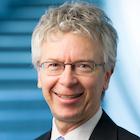
Professor Dowell is the Head of the Department of Audiology & Speech Pathology at the University of Melbourne and holds the Graeme Clark Chair in Audiology and Speech Science. He is also Audiology Director of the Melbourne Cochlear Implant Clinic at the Eye and Ear Hospital. He has been involved in clinical work and research in cochlear implants for over 30 years and devised and coordinated the first clinical trial of the Nucleus (Cochlear) commercial cochlear implant system between 1982 and 1985. He was involved in devising the speech coding schemes for the Nucleus cochlear implant system and in developing clinical procedures in the field. Richard Dowell has co-authored 184 peer-reviewed scientific publications and has over 4500 citations with an h-index of 38 and a g-index of 63 (Mar 2014). He has presented at 57 international scientific meetings.
Special Symposium - LOCHI Study
Monday 5 May 2014
5.35pm - 6.05pm
Do children with hearing loss who received early intervention catch up with their normal-hearing peers at 5 years? Update on the Longitudinal Outcomes of Children with Hearing Impairment (LOCHI)Study.
Speaker
Dr Teresa Y.C. Ching
Aims: To examine the efficacy of universal newborn hearing screening (UNHS) for improving outcomes of children with hearing loss; and to investigate the factors affecting outcomes.
Method: this is a prospective, population-based trial that commenced in 2005. In the Longitudinal Outcomes of Children with Hearing Impairment (LOCHI) study, about 450 children born with hearing loss between
2002 and 2007 in NSW, Victoria and Southern Queensland were recruited. After enrolment, children were evaluated at several intervals over the first 5 years of life. Standardized, normed tests were administered to children, and demographic information was collected from parents and service providers.
Results: Regression analysis revealed that language ability of 5-year-old children with hearing aids decreased significantly with increase in age at hearing-aid fitting. Together with severity of hearing loss,
non-verbal cognitive ability, maternal education and oral mode of communication, these factors accounted for more than 78% of variance in scores. The decrement in performance with delays in age of fitting was greater for
children with more severe loss than those with lesser loss. For children with cochlear implants, age at cochlear implantation, nonverbal cognitive ability and absence of additional disabilities were significant predictors of language outcomes. The presence of auditory neuropathy did not significantly affect outcomes of children with hearing aids or cochlear implants, after allowing for the effects of hearing sensitivity and other characteristics.
Conclusions: This study provides high-quality evidence on the efficacy of UNHS. The findings form the basis for evidence-based guidelines for effective management of children with hearing loss.
Dr Teresa Y.C. Ching, PhD
Senior Research Scientist and head of Rehabilitation Procedures research, National Acoustic Laboratories, Australia
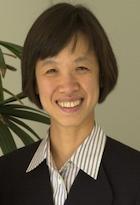
Teresa Y.C. Ching, PhD is a senior research scientist and head of Rehabilitation Procedures research at the National Acoustic Laboratories in Australia. Her research interest and experience encompass many aspects of hearing rehabilitation for children and adults with hearing loss: hearing aid amplification requirements, speech intelligibility and psychoacoustic abilities of people with hearing loss, evaluation methods for children, bimodal hearing and bilateral cochlear implantation for children and adults. Her latest research focuses on determining the impact of hearing loss on children's language, literacy, psychosocial skills, quality of life, and academic outcomes; and devising intervention methods for improving outcomes.
Special Symposium - Global Audiology
Wednesday 7 May 2014
1.30pm - 3.00pm
Strategic and Sustainable Solutions for Improving Hearing Health Care Globally
Dr Helen Goulios – Moderator
Speakers
Dr Helen Goulios - (Clinical Coordinator Audiology, University of Western Australia, Australia)
"Where do we start? Use of a conceptual model to study and improve hearing health care globally"
Professor DeWet Swanepoel - (Professor of Audiology, University of Pretoria, South Africa)
"mHealth for audiology – Improving access in developing countries"
Dr Gitte Keidser - (Senior Research Scientist, National Acoustic Laboratories, Australia)
"The impact of self-fitting hearing devices on audiology service provision"
Louise Carroll - (CEO, The National Foundation for the Deaf, New Zealand, and Human Rights Officer, the International Federation of Hard of Hearing People)
"Does the UN Convention on the Rights of Persons with Disabilities support Communication as a Human Right?"
Dr Helen Goulios, PhD MClin Aud. MAudSA CCP
"Where do we start? Use of a conceptual model to study and improve hearing health care globally"
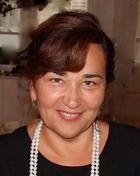
Clinical Coordinator Audiology, University of Western Australia, Australia
Helen Goulios is the Clinical Coordinator for Audiology at the University of Western Australia. Her areas of expertise and research interests include adult and paediatric aural rehabilitation, and development and management of audiology programs in special communities. She also undertakes research in professional education and workforce development in audiology through her private consultancy. Helen's career has included senior clinical and management positions with Australian Hearing in Perth, the National Acoustic Laboratories in Sydney, and as a Project Manager with the Royal National Institute for the Deaf in London. She is on the Research Committee for the Ear Science Institute of Australia and is the current Vice President of Audiology Australia.
Helen is committed to promoting audiology education and service delivery in developing countries, and has worked in improving audiology in Asia and Africa. She is an active member of the Perth-based charity HearingAID - East Java which works together with the Western Australian and Indonesian Governments to develop and expand early identification and intervention services for hearing-impaired children in East Java, Indonesia.
Professor De Wet Swanepoel
mHealth for Audiology – Improving Access in Developing Countries
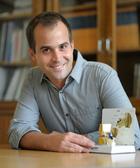
Professor of Audiology, University of Pretoria, South Africa
De Wet Swanepoel is professor in Audiology at the Department of Speech-Language Pathology and Audiology, University of Pretoria, South Africa and a senior research fellow at the Ear Science Institute Australia. He also holds adjunct positions at the University of Texas at Dallas, Callier Center for Communication Disorders and the University of Western Australia School of Surgery. He has published more than 70 peer-reviewed articles, books and book chapters and has received a number of awards in recognition of his work. His research and clinical interests span the field of early identification and diagnosis of hearing loss, objective measures of auditory functioning, and ear and hearing telehealth. Related to telehealth, De Wet serves as co-chair for the American Academy of Audiology Taskforce on Tele-Audiology and chair of the tele-audiology committee for the International Society of Audiology.
Dr Gitte Keidser
"The impact of self-fitting hearing devices on audiology service provision"
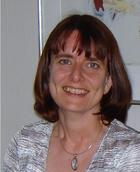
Senior Research Scientist, National Acoustic Laboratories (NAL) Sydney
Gitte is a Senior Research Scientist with the National Acoustic Laboratories (NAL) in Sydney where she manages a team working on projects related to hearing devices and rehabilitation. Her own research and many publications have focused on the effects of advanced signal processing strategies on user performance and preference, loudness perception and overall gain preference, and trainable and self-fitting devices. Gitte holds a PhD from the Technical University of Denmark (DTU). Prior to coming to Australia to take up the position at NAL, she worked at DTU as a Research Fellow on a collaborative project with the Danish hearing aid industry evaluating noise reduction algorithms for digital hearing aids. Gitte is a member of the International Collegium of Rehabilitative Audiology and serves on the Editorial Board of several journals.
Louise Carroll
"Does the UN Convention on the Rights of Persons with Disabilities support Communication as a Human Right?"
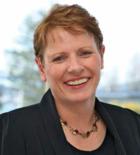
CEO, The National Foundation for the Deaf, New Zealand, and Human Rights Officer, the International Federation of Hard of Hearing People
Louise has worked in a wide range of public policy areas including leading the campaign for the NZ government to ratify the UN Convention on the Rights of the Child and being a member of the group appointed to form national policy on reducing the risk of possible CJD contamination of the national blood supply.
More recently, as CEO of the National Foundation for the Deaf (NZ), a peak body with nine national organisation members who work in the deaf and hard of hearing sector, Louise has been driving a public policy change campaign in combination with Human Rights Commission mediation for those seeking ACC rehabilitation for injury caused Noise Induced Hearing Loss (NIHL).
In early 2013 Louise was appointed as the Human Rights Officer for the International Federation for Hard of Hearing (IFHOH); completed an intensive study programme on the United Nations Convention on the Rights of Persons with Disabilities (UNCRPD) and authored the IFHOH UNCRPD Implementation Toolkit, designed specifically for the hard of hearing sector.
Louise, who is hearing impaired and has APD, is a member of the NZ Government Relay Advisory Group, is Chair of the NZ Deaf and Hard of Hearing Captioning Working Group and Chair of the NZ Disability CEO Forum. She is also writing a PhD thesis at Flinders University, on the public policy response to Prisoners with hearing impairment in NZ.





